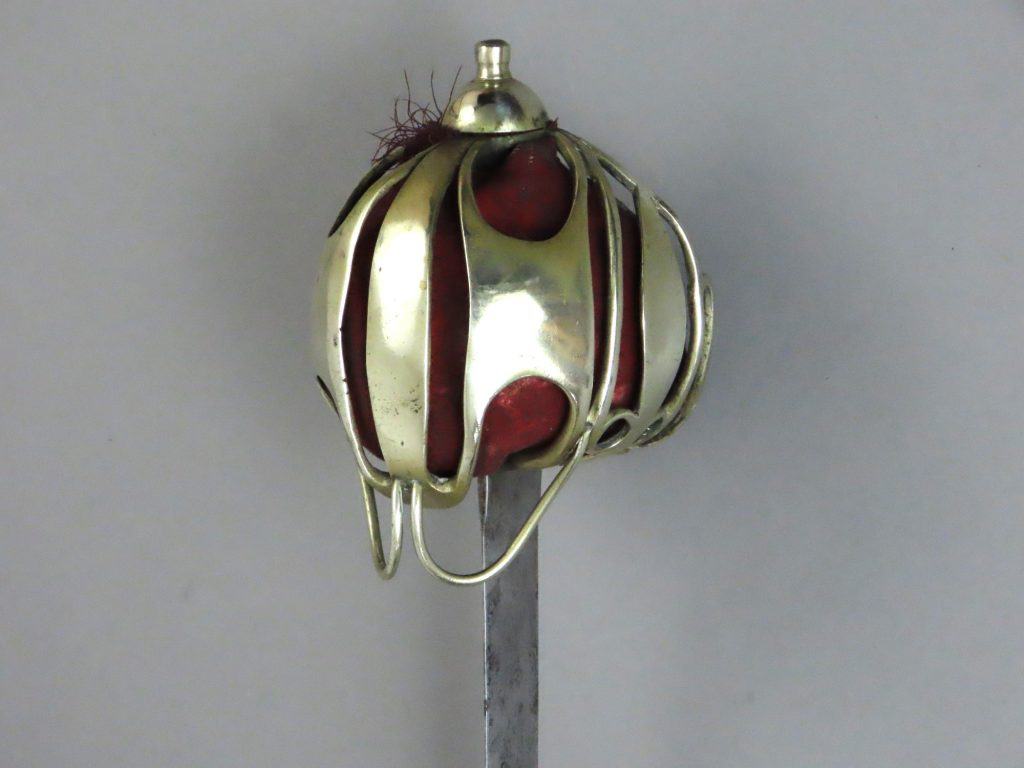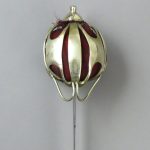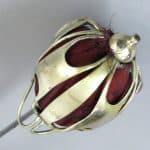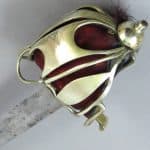
A Rare Scottish 1798 Pattern Officers’ Basket Hilted sword with Paktong / Nickel Hilt
To enquire about this itemplease click here
Price: £2,575
Ref: 42602122
Item Description
A rare example of the distinctive basket hilted sword introduced for Scottish Infantry officers in Highland Regiments in 1798. It was replaced by the regulation steel basket hilt 1828 pattern three decades later. The sword type was used throughout the Napoleonic War period.
The hilts of these swords were most usually made of gilt copper, bronze or brass. This sword is a rare example in that the hilt is made from a lighter coloured nickel-based alloy. The use of nickel alloy in the production of weapons and tableware was increasing in the early 19th century as a substitute for silver, variously called Tutenag, Paktong, German Silver etc, but is rare in the production of sword hilts at this time, although some made from imported Chinese Paktong are known (for an example see an English Georgian Slot Hilt Hanger of the late 18th century mounted with a Paktong hilt sold by C&T Auctioneers and Valuers Ltd, Royal Tunbridge Wells, UK, lot 119, 1st November, 2017). A further nickel-based hilt of Scottish 1798 pattern that we are aware of is detailed in note 1 below.
The basket guard is made of rounded bars and flattened plates in the usual manner with forward loop guards and a swollen wrist guard terminal to the rear quillon. The upper terminals of the guard arms are fixed onto a ring inside which the stem of the mushroom shaped pommel is fitted. The pommel is dome-shaped on top with a protruding integral waisted pommel button.
The double-edged gently tapering blade is 32.5 inches (just over 82 cm) long. It is of lenticular section with a short ricasso. A central fuller commences a short distance from the hilt on each side and is 9.5 inches (24 cm) long. The blade is unmarked and probably a German import which is a common occurrence on swords of this type and most usually of Solingen manufacture.
The grip is of spirally grooved wood covered with shagreen held in place with thin strands of twisted copper wire now coloured with age. It is mounted with an alloy ferrule at the base of similar colour to the hilt and retains a red woollen fringe at the top plus its leather liner stitched with red cloth on the outside and bound with blue silk ribbon at the hem.
The materials used for 1798 pattern hilts were less robust than iron and as a result were susceptible to damage. Many surviving and published examples have bars missing, are out of shape and often with repairs. This sword is a good example. The blade has just small patches of blackened age-related staining in places and the hilt has kept its shape without damage or repairs.
Note 1:
For other examples of the 1798 type see: Harvey J S Withers, “The Scottish Sword 1600-1945”, Paladin Press, 2009, particularly page 144 for a 1798 Pattern described as: “An unusual piece. The basket appears to be manufactured from a combination of white metal and brass (mixed together)”. The pommel, blade ricasso, grip shape and binding, plus the basal ferrule, liner and fringe, are more than coincidentally similar to our sword, indicating that both may have been made in the same batch by the same maker.











